Searching for seagrass on Skye
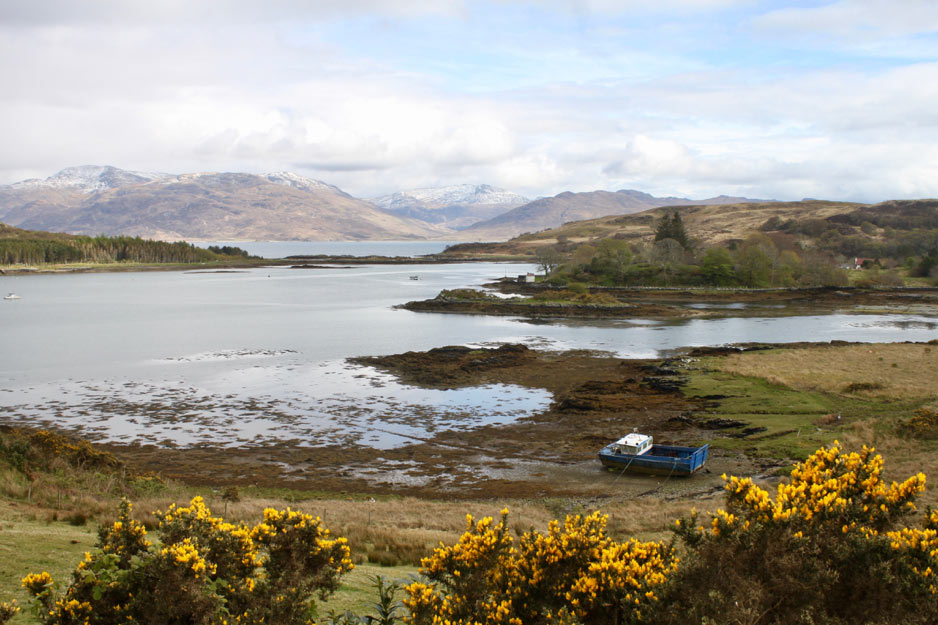
Scotland threw it all at us, and I think for the most, we enjoyed every part! After 13 hours on the road, we turned off to Heaste, the village we were staying in on the Isle of Skye. We headed off down a single-track lane, full of blind corners and summits, with the snow coming in thick and fast, arriving at an old house on the water’s edge. With an electricity meter that needed pound coins feeding in to it and an ancient coal fire, there was a moment of what have we let ourselves in for, but Skye quickly showed us why, swapping the snow storm for bright blue skies and snow covered mountains. Looking across Loch Eishort from our accommodation. The wildlife was incredible, with seals and otters popping up left, right and centre, along with stags and golden and white tipped sea eagles. Peering out of the kayaks into the seagrass meadows reflected the on top abundance but with sea hares and all kinds of crabs and starfish. A sea hare in the meadow. Each day and site bought new challenges. The winds picking up made it difficult to see deep enough into the water to check for seagrass, but we used a piece of equipment called a bathyscope, which stops the ripples and the water surface glare making it easier to see into the water. Spending a couple of days on the kayaks searching around Loch Eishort we managed to find three new healthy seagrass beds! On days when the weather was flipping between hail and sunshine we walked beaches looking for any strands that had been washed up to give an idea of whether there maybe any beds close by. Any sites and wash ups found had their photo taken and uploaded to the Seagrass Spotter app to add to a growing map of meadow locations. We were also putting baited cameras out in the seagrass and were rewarded with some lovely shots of big dabs, pollock and even the shadow of a seal going past. A bathyscope (orange cone) and a baited remote underwater video station. Skye is an incredible place. Each way you look and corner you turn is a new breath taking view. It catches your imagination and sweeps you up in it’s magic, which was reflected in the passion of the locals. South Skye Seas Initiative shared so much valuable local knowledge with us and were generous with their offers of help to which we are very grateful. There was also a family element to this trip, calling on my dad and cousin for man power, and despite neither of them having a marine back ground they both took to it without complaint – taking hail stones to the face and getting soaked in 8◦C water is a big ask for our little seagrass, so a huge thank you to them. The whole family in the water to put out some baited cameras. After such a successful trip I can’t wait to get back out searching for seagrass! Evie
The Edinburgh International Science Festival
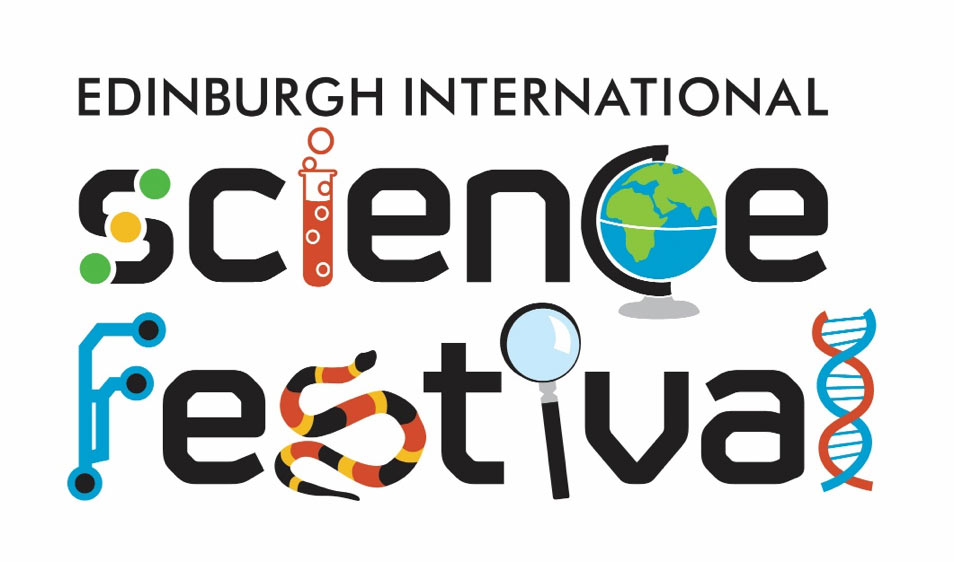
Edinburgh Science Festival Bubbles and enthusiasm took over for Project Seagrass as we set up our stall at Edinburgh International Science Festival last week. The festival has taken over the city for two weeks every year since 1989, and was the world’s first public celebration of science, definitely something that we’re proud to have been involved with. The festival covers everything you could imagine- from the science behind which biscuit is the best tea dunker (rich tea was the winner) to trying your hand at programming a rescue robot! The seagrass meadow filled with many different colours and species! Our very own seagrass meadow was in pride of place in the middle of Summerhall, with a colouring station close by. We had all ages colouring in creatures to live amongst the seagrass, resulting in one of the brightest meadows I’ve seen. Colouring station with lots of creatures and ID guides to get inspired by. It was great to see how eager the kids were to learn and see more- they were fascinated by clips of cuttlefish swimming through the grass and loved hearing about our research. They also had the chance to dress up as a seagrass scientist – tiny tots wearing masks that covered their whole faces and trying to walk in fins that were bigger than the kids themselves. RJ sharing some of his seagrass experiences. The enthusiasm we got from the kids was reflected in the stalls around us, their cracking activities seemed to have permanent queues of public wanting to get involved with things like bee anthropology, the British Heart Foundation and speech and language research. The buzz that came from being part of such a successful event was felt by all the seagrass team so a huge thank you to those who put in so much hard work to make the festival happen and for letting us be a part of it! ( A big THANK YOU to Evie Furness, Rufus Sullivan, Laura Coomber, Lauren Skye Clayton, Dani Whitlock and Sarah Jane Pope for volunteering their time to help us deliver this event)
Twenty Sixteen: A year in review…
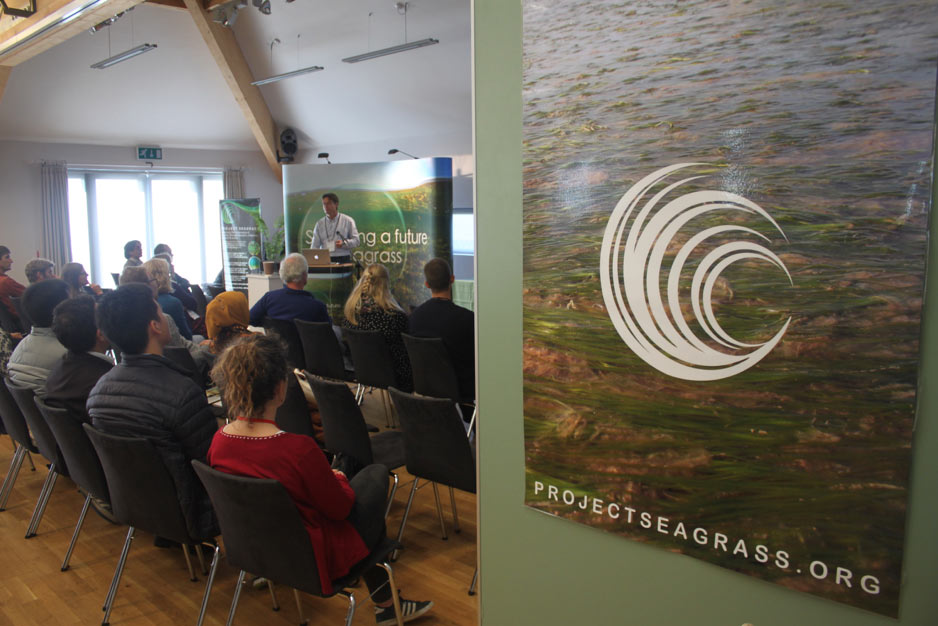
With every year that passes we’re given a unique opportunity to look back and reflect on what we’ve achieved. I’ll be honest, every year since our inception in 2013 we’ve been immensely shocked at just how much we’ve achieved given that we’re on a shoestring budget. 2016 was certainly no different. January We kicked off 2016 with a bang as Richard and myself released our paper discussing the “The perilous state of seagrass in the British Isles”. This was subsequently picked up by the BBC and the Daily Mail amongst others. Additional to this, RJ headed to the BETT show in London to explore the potential use of IT in marine education. Every year, the BETT show sees some of the most innovative education service providers and distributors “take to the stage”, and it opened our eyes to the potential that technology has for marine conservation – a theme that would shape some of our ideas for the year to come. In January Ben and Richards paper made the headlines February Fast forward to February and we were continuing to build on the momentum be built up in January with a hugely successful Seagrass Education & Awareness (SEA) day with Ysgol Morfa Nefyn, complete with seagrass species sand monsters and even a seagrass meadow treasure hunt! We completed the first (albeit cold!) Seagrass-Watch survey of the year, and checked up on our restoration trial that we’d started back in November 2015. Unfortunately, winter storms had battered the site which we’d chosen, and after finding a few seed bags out of the sediment, we weren’t sure of the success of their placement. However, we did observe some signs of germination which gave us hope for the future. Further to this, I was invited to speak live on BBC World News on the topic of marine litter, and we saw a pivotal moment for seagrass research, with seagrass featuring on the cover of Nature. In February Ben was invited to speak live on the BBC. March When I think back to March, it almost seems as though that month alone deserves its own blog post. Back in 2015 we entered the #PeoplesProjects, a competition held by the Big Lottery Fund and ITV to win up to £50,000 of National Lottery money. The Peoples Projects aimed to give organisations the chance to build upon previous projects they had completed with help from the Awards For All funding scheme. We came up with Mission SEA, which aimed to bring the ‘coast to the classroom’ and the ‘classroom to the coast’ to engage Wales’ children with our marine natural heritage. The education scheme we proposed, which would have involved 15,000 children from the counties of Gwynedd, Ceredigion and the Isle of Anglesey, sought to teach children about the resources that our seas provide, whilst inspiring them to become future guardians of our oceans. Although we didn’t win the funding, we finished in the Top 5, and we accompanied the campaign with our hugely successful Project Seagrass Official Launch and the launch of our novel seagrass mapping application, SeagrassSpotter. March was also the month we made our views clear on the EU referendum. “Don’t let the UK become a fish out of water: For the sake of our seas let’s stay in the EU.” Finally Leanne and Richard released a publication that explains in simple terms how to improve the health of the worlds seagrass, at the same time releasing a summary video on YouTube! In March our “Mission Sea” outreach activities were a great success! April While SeagrassSpotter picked up its own pace throughout April, RJ took a lead in expanding the range of Project Seagrass to Scotland, opening a new base of operations, albeit from his living room, in Edinburgh. I spent time in Cambodia, setting up a Cardiff University research project and additional time in Myanmar taking the first detailed look at seagrass communities in the Myeik Archipelago. In April Ben had help on his hunt for seagrass in Myanmar May In May I presented some of my work at MSEAS in France at a conference focussing on understanding marine socio-ecological systems (including the human dimension in Integrated Ecosystem Assessments) and later this month Greg (our regional ambassador for the East of England) conducted some outreach at The Deep in Hull. Richard attended a Zostera Experimental Network gathering in Davis, California. In May Richard attended a Zostera Experimental Network gathering in Davis, California June In June we discovered some long lost seagrass (the first time Zostera marina has been recorded at the location since 1891!) and RJ and Lauren delivered a very successful event at Glasgow Science Festival’s Science Sunday Big Birthday Bash! The stickers, postcards and posters were a huge hit with Glasgow’s young folk so we made sure we had plenty of materials to hand out to Scotland’s next generation of marine biologists! In June the Glasgow Science Festival was a huge success! July July kicked off with a trip down south for Lauren who did some work with the Cornwall IFCA to help understand the juvenile fish value of seagrass in Cornwall. At the same time Laura was working with James Duffy (a PhD student from Exeter University), they began a summer of mapping seagrass using a variety of drones in Wales. Ben and Josie did some outreach with many of the thousands of people who enjoyed Kate Humble’s inaugural Big Day Out festival. Richard led a workshop in Makassar, Indonesia in collaboration with Hasanuddin University and Alex joined us in the field on a Work Experience placement. To round off July, Richard gave a plenary talk about seagrass and food security to The 1st Indian Seagrass Ecology Conference. In July Lauren headed south to work with the Cornish IFCA August In August we heard of our success in applying for charitable status in Scotland and RJ helped to run a workshop at IMCC4 on “Bringing fishermen to the table” using online “Bambuser” technology. A simple concept, yet one that marks a pretty important development considering a lot of commercial fishermen (from both developed and developing countries) who cannot attend conferences like IMCC4 or other such events. In August we were awarded Charitable Status in Scotland: Charity number SC046788 September In September, Evie organised the delivery of some excellent outreach at the British Science Festival and the team began assisting the Convention on Migratory Species (CMS) with the development of a seagrass and dugong e-resource kit.
ISBW12 – A first conference blog!
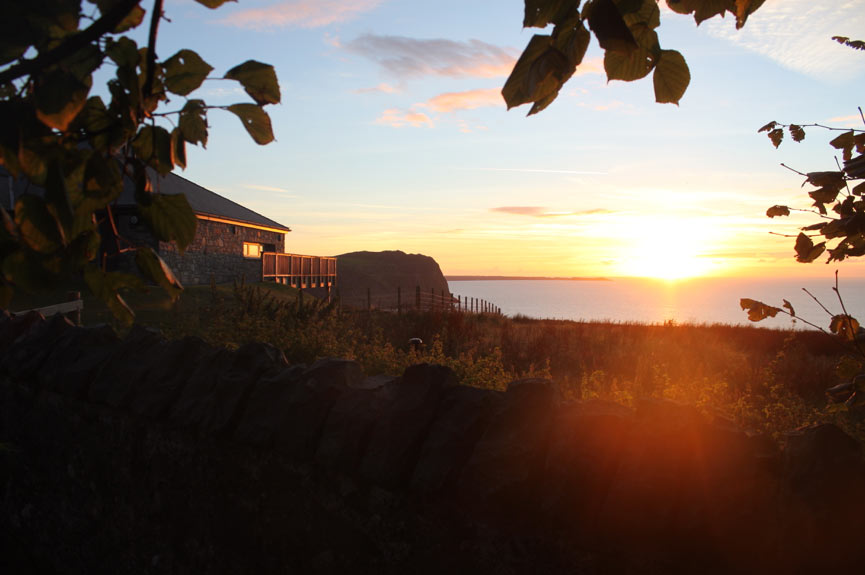
First off, the stereotype of a conference in my head is hushed voices, fancy clothes and everything deadly serious, but throw into the mix that it’s a conference based around seagrass and I was completely at a loss as to what to expect. Having packed for all possibilities (would the seagrass team transform into a posh looking bunch? Or would the usual jeans and an old tee be acceptable?) we headed up to Nant Gwrtheyrn in North Wales. The Nant is a gorgeous former quarrying village looking out past dramatic cliffs to the ocean with a seagrass bed just around the corner- I was definitely spoilt with the location of my first conference, it doesn’t get much better than having only a five-minute walk to the beach to process the constant buzz of activity. It’s probably not the normal conference experience that one of the first things I learnt was that if you sneak off last minute to pretend to be in The Lord of the Rings exploring the cliffs, then put on things that can get muddy- twice I went down, but proudly caught myself before my one pair of semi smart trousers changed colour! The path from Nant Gwrtheyrn conference centre down to the beach. To kick the week off was a plenary by Professor Carlos Duarte (King Abdullah University of Science and Technology) talking optimistically about seagrass meadows and popular culture getting everyone laughing – an easy start; maybe conferences weren’t so big and scary! It did leave one question on a conference newbies mind though, the word ‘plenary’ was not yet in my vocabulary – so any students heading to your first conference, everyone attending the conference goes to these, in other words if you talk at one then you deserve respect, you’re a big name in your field! Professor Carlos Duarte ‘Securing a Future for Seagrass’ in the weeks first plenary. So next up was my first workshop. Again the apprehension was definitely there – I’m an undergrad, what could I have to offer to all these academics? Well most of the time not a lot, but it was a perfect opportunity to question and learn, and once in a blue moon I might stumble across an idea that the top dogs had over looked. As intimidating as a professor with a tonne of published papers is, they tended to be welcoming to all ideas and helpful to gently point out that they tried that method 20 years before and it may not be the strongest approach. Timing and Triggers for seagrass flowering workshop with Nordlund LM, Creed J, Jackson E, & Nakaoka M. Despite some fascinating talks and some hot debates at workshops (seagrass scientists can get heated!) that’s not where I personally learnt the most. Sitting with new people each meal time and relaxing with them after a long day was when I found the most inspiration; it’s the time when people get excited about their work and me being fresh faced to the seagrass world meant they could just enjoy telling their seagrass stories without worrying about nitty gritty details. In those relaxed situations people were happy to chat and answer my drilling of questions. The enthusiasm of Dimosthenis Traganos, a Greek pHD student studying in Berlin, who’s eyes lit up as he was telling me about using satellite imaging to map the seagrass of his home lands and the pride as Oliver Thomas from Heriott-Watt University described the numerous different studies he’d done to complete his masters; these were the times when I found as a conference first-timer that I learnt the most. Dancing to ‘y Moniars.’ a local Welsh band. Helping the organising team I felt as though I was sat nicely on the edge of the eye of a storm- able to see the manic behind the scenes madness, but also able to join the peace of the attendees. It was a week of huge learning curves in all aspects- sharing with two Indonesian ladies meant early starts and spicy tea, that whatever culture you come from there is no end to small talk about the welsh autumnal weather and hopefully I’ve picked up one or two new seagrass facts along the way too. A huge thank you to Project Seagrass for all their hard work in helping to host the twelfth successful International Seagrass Biology Workshop and for giving me the opportunity to tag along and get involved. It was definitely a positive week for securing a future for seagrass. And in case you were wondering, the seagrass team does not magically transform into a group wearing tuxedos and ball dresses with pinkies always out when they enter a conference room, they’re still as chilled as ever.
Project Seagrass goes to Cornwall

As masters students from both Swansea and Glasgow Universities, we’re both currently carrying out seagrass related research projects. Beth is performing her masters project, and Lauren is performing her final year honours project. Beth is studying the impacts of chain moorings on seagrass, particularly looking at how chain width effects the size seagrass scars. Beth uses a drop down camera frame and GoPro that she drops to the sea floor around moorings while snorkelling. Seagrass mooring scars in St Mary’s Bay, Isles of Scilly Lauren is studying the fish communities associated with Seagrass and non-seagrass habitats. Lauren drops baited cameras called BRUVs and leaves these for an hour, when the video is watched back the numbers and species of fish seen in the video are noted. Mono BRUVs ready to be deployed at Durgan, Helford Some of our first BRUV drops in Seagrass a couple of weeks ago resulted in us spotting a Cuttlefish, an amazing and unanticipated sighting! Last week we managed to get out on the Tigerlily, Cornwall IFCA’s research vessel to deploy some of the BRUVs in less accessible sites and also deploy some larger camera equipment. This week we have been to the Isles of Scilly to study the moorings in St Mary’s bay. We have managed to find some fantastic seagrass beds in the Helford River and Trefusis channel, and some great examples of seagrass scars too. Mono BRUVs ready to be deployed at Durgan, Helford So far the weather hasn’t been all that fantastic, but our last few days have been especially sunny, particularly the weather today in the Isles of Scilly, we’ve very much enjoyed being in the water for our research. This has been our first time in Cornwall and it has been fantastic, it’s just a shame we’ve been too busy to actually have a look around and be tourists for the day! We’ve both said though that we’d love to come back on holiday to this beautiful part of the country in the future.
Intern Spotlight: Laura Pratt

As a third year Biology Student from Cardiff University, I’ve been lucky to get involved with Project Seagrass, which has its offices within the University. I first started working with the team last summer when I took part in an 8 week CUROP placement (Cardiff University Research Opportunities Programme) at the Sustainable Places Research Institute. The project itself, focused on studying the role of seagrass meadows in fisheries productivity in the Philippines and mainly involved searching for research papers linked to the topic. Relevant information was then incorporated into a literature review which focused on the status, importance, threats and conservation efforts currently taking place within seagrass meadows of the Philippines. Any details on fish species found to inhabit to seagrass ecosystem specifically in the Philippines were also added to an extensive database, to track known species in the country. I then presented my findings in a poster presentation and had the opportunity to talk to other students at Cardiff University and members of the public about the importance of seagrass meadows in the Philippines. My poster, created as part of my CUROP placement From this project, I have then gone on to study the status and distribution of another seagrass species, Zostera noltii, found closer to home, along the South Wales coastline. Z. noltii is one of the two seagrass species found in the UK and due to previous taxonomic confusion within the Zostera genus, there is a severe lack of understanding of the distribution of this species. Using historical records in the form of papers, reports and GIS layers I have been able to determine all the historical locations of Z. noltii found in Wales. This information along with details provided from Greg Brown’s (Project Seagrass Regional Ambassador) predictive mapping tool created for his MSc at Swansea University, has enabled me to generate a list of sites where Z. noltii has the potential to grow and survive. For my project, I have been visiting these specific sights and recording if Z. noltii is present or not, while also using out new Project Seagrass app, Seagrass Spotter (http://www.seagrassspotter.org). If Z. noltii is present I am then using various methods of ground truthing and aerial work using our Project Seagrass UAV, to generate accurate maps of the seagrass meadows, in hope that mapping the Z.noltii distribution will help aid its conservation in Wales. Extremely dense patches of Z. noltii observed in the Pembroke Dock Aerial image of dense seagrass meadow in Pwllcrochan, Pembrokeshire, taking on DJIGlobal Phantom 3. Drone work at Angle Bay with James Duffy, a PhD student from Exeter University. Whilst working for Project Seagrass I have also been able to get involved with some of the charity work aside from my own project, including taking part in multiple Seagrass-Watch surveys, in Porthdinllaen, North Wales. My first trip to Porthdinllaen in November 2015 was an unforgettable experience, seeing a Zostera seagrass meadow for the first time and being able to take part in Project Seagrass’s first seed restoration trial! I have also had the opportunity to participate in some of Project Seagrass’ educational outreach programs in North Wales, assisting and helping children from a local primary school understand the importance of seagrass meadows and learn more about some of the animals that live in their nearby ocean. I have thoroughly enjoyed this aspect to my placement, getting involved in other events such as Project Seagrass’ Mission Sea campaign for the People’s Project competition back in February and Project Seagrass’ official launch at Cardiff University, to help promote the charity amongst members of the general public. Furthermore, my placement year with Project Seagrass has given me the opportunity to get involved with some of the social media branding and simply helping to spread the Project Seagrass word. From writing blogs for organisations such as the Ian Somerhalder foundation to getting local volunteers and students from Cardiff university involved in seagrass sampling for my own research project. The Project Seagrass team is continuing to grow and I have loved teaching others about the great things Project Seagrass is doing to help protect this vulnerable marine ecosystem. I look forward to the rest of my placement here at Project Seagrass and hope to be just as involved next year when I return back to Cardiff University for my final year of my undergraduate degree.
Intern Spotlight: Lauren Clayton
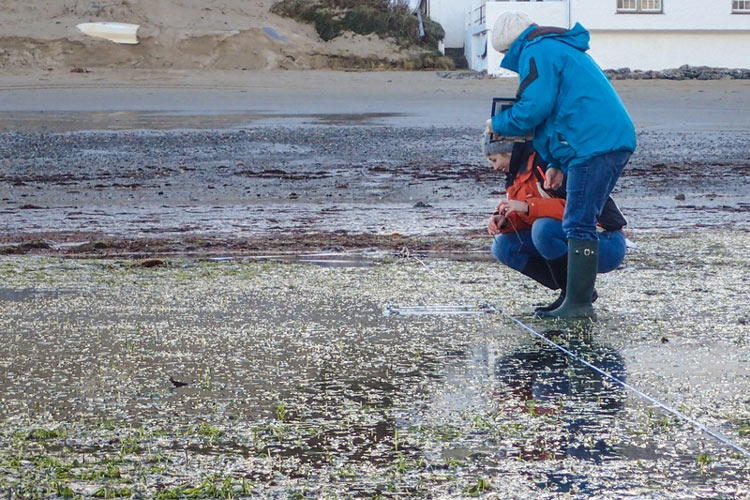
As a Marine Biology student at the University of Glasgow, Scotland, I was lucky enough to be accepted on to a Maters Work Placement. This course allows a few selected students to take a year between the 3rd and 4th year of their degree to experience working for an organisation while also performing research. At the end of the placement I continue back into my final honours year and I will then graduate with a masters. I am currently working with Project Seagrass as an intern for my placement and will be working with them in this capacity until the summer. My current work involves conducting a meta-analysis of fish assemblages in seagrass habitats around the world. This involves searching for research papers that contain any data about fish species that have been observed in seagrass beds and then adding this data to our own database. I have been organising this database in order to make it easy to navigate and interpret and I have also been verifying the data that has already been entered. I am now onto the stage of searching for any papers that have been missed or published after the original searches were made so that we can ensure that all the possible work with the data we want have been found and collated in our database. This way when we are finished we can say that the fish species mentioned in our database are found in seagrass habitats in certain locations with absolute certainty. In addition to this, I’m also working on a project that involves analysing videos that have been filmed in Indonesian seagrass beds. Baited Remote Underwater Video systems, or BRUV’s, are camera systems that are left underwater, to attract fish with the use of bait. Analysing this footage is a tiresome task, especially with each video lasting 30 minutes. Analysis of this is done using special software which allows you to tag and count individual fish species in each frame – again very time consuming. This gives us the MaxN. The MaxN is the maximum number of one species of fish in a frame of the video at a given time. This isn’t the most exciting work and I tend to find myself daydreaming that I am scuba diving in Indonesia while watching certain stretches of video – many with very little fish. A fish investigates the bait As part of my internship I’ve also had the opportunity to conduct my own research. Once written up this will then contribute to my degree, and once complete will help secure my masters. For this project I am using the videos collected in Indonesia and analysing them in a similar way to determine if there are fish species or assemblages that show habitat specificity towards certain seagrass species, or seagrass beds cover. I am hoping to see some sort of connection with this by only time will tell. Some videos lacked any fish Back in Feburary I conducted my first SeagrassWatch exercise in Porthdinllaen, Wales – I can spell this place, but can’t pronounce it! It was a nice opportunity to get out of the office for a few days and experience some field work, even if it did mean getting up ridiculously early and getting very cold and wet. As part of the trip we also performed some educational outreach with a primary school from the area. They learnt about seagrass and its importance and they also learnt about what lives in the seagrass and had a fantastic and fun day out at the beach – sand animal building was a requirement of course! I was even trusted to have a go with the Drone, which was also great fun! Drone flying! In addition to everything else, I’m also researching Scottish seagrass during my internship, in an attempt to map out its rough distribution so that I can find some good spots in Scotland to start my own SeagrassWatch monitoring, expanding the range of Project Seagrass sites to include Scotland. We’re going to be involved with the Glasgow Science festival and will hopefully put on some events over the summer around Glasgow.

